A couple of years ago my family were undertaking the sombre task of clearing my grandmother’s house after she had moved into warden-controlled accommodation. I was attempting to deal with the large pile of student junk I’d deposited in the back bedroom about a decade earlier when a camera case caught my eye on a high shelf.
It was grey with red piping and a good inch too short for the bulky black compact it was supposed to contain. I hadn’t seen it for nearly twenty years, but recognised it instantly as the camera my grandfather had used throughout my childhood. I was delighted when I popped in some fresh batteries and it whined noisily to life.
Then I started to think about the brand. Miranda. Beyond my grandad’s camera, I’d literally never heard of Miranda cameras. A quick google revealed they were originally a Japanese company specialising in SLRs, but had gone out of business in 1978. The name was later purchased by British high street retailer Dixons, who used it to sell their own range of badge-engineered cameras. This didn’t fill me with confidence, to say the least. Had grandad bought a pup?
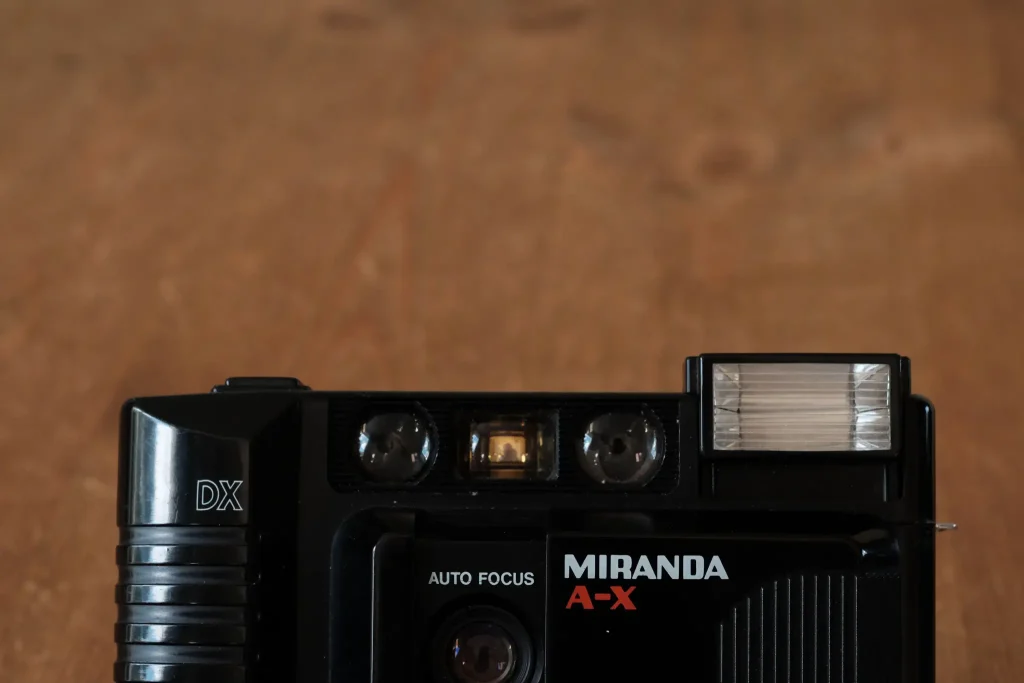
The Dixons Miranda SLRs had been rebadged Cosinas, but there was very little information about their compact range. The A-X was released in 1985 – this one was probably purchased shortly before my grandparents came to visit us in New Zealand that year – and was a fully automatic compact with a 34mm f/4 lens and a manual pop-up flash. I couldn’t find any record of Cosina making such a camera and my attempts to identify the camera via that rather oddball lens came to nothing.
Identifying the clone
I had resigned myself to never knowing what camera Dixons had rebadged, but then Hamish posted a picture of the Halina AF810 on Instagram and I realised the A-X’s chassis was identical. Mystery solved – Halina made compacts for Dixons in the 80s. I think we can all sleep a little easier, now.
I know what you’re thinking, though; Hamish delivered his own (rather damning) verdict on the Halina just a couple of weeks ago, so what’s the point of reviewing its clone? Well, I’ve got a few reasons. For one thing, although the two cameras are externally identical I’m not completely sure their innards are the same.
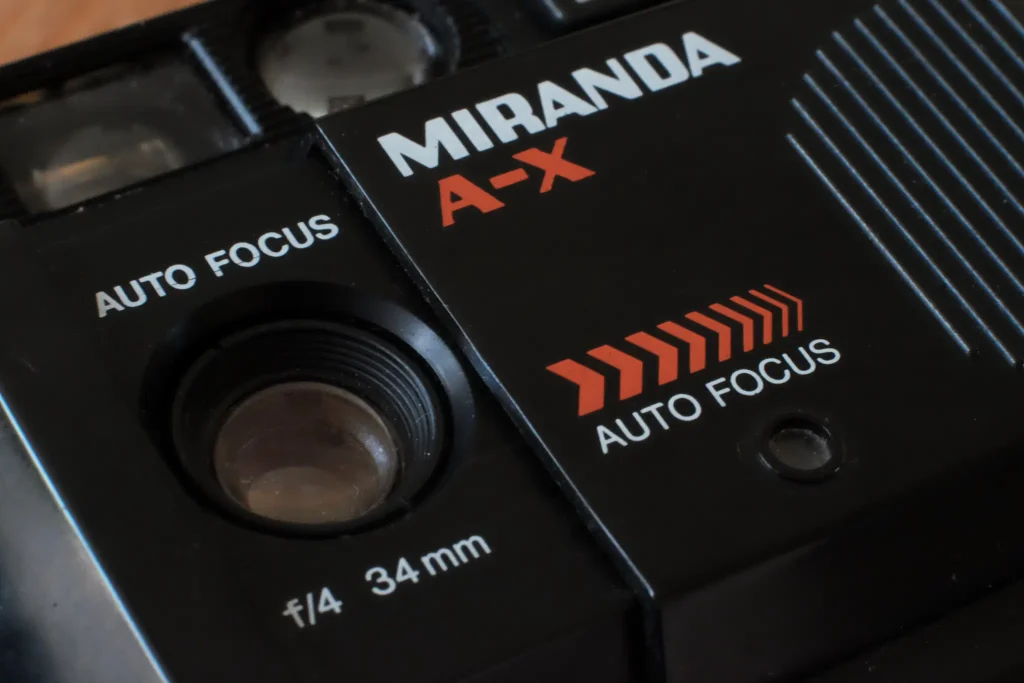
For starters, the A-X is a 34mm f/4 where the AF810 has an f/3.8. Are the lenses actually different or did Halina just not want to give Dixons that last 0.2 of an f? I also haven’t encountered any issues with the film advance jamming even though I’ve put several rolls through it. It was suggested that Hamish’s Halina might be a bit knackered, so it might be interesting to see how a fully functional version performs.
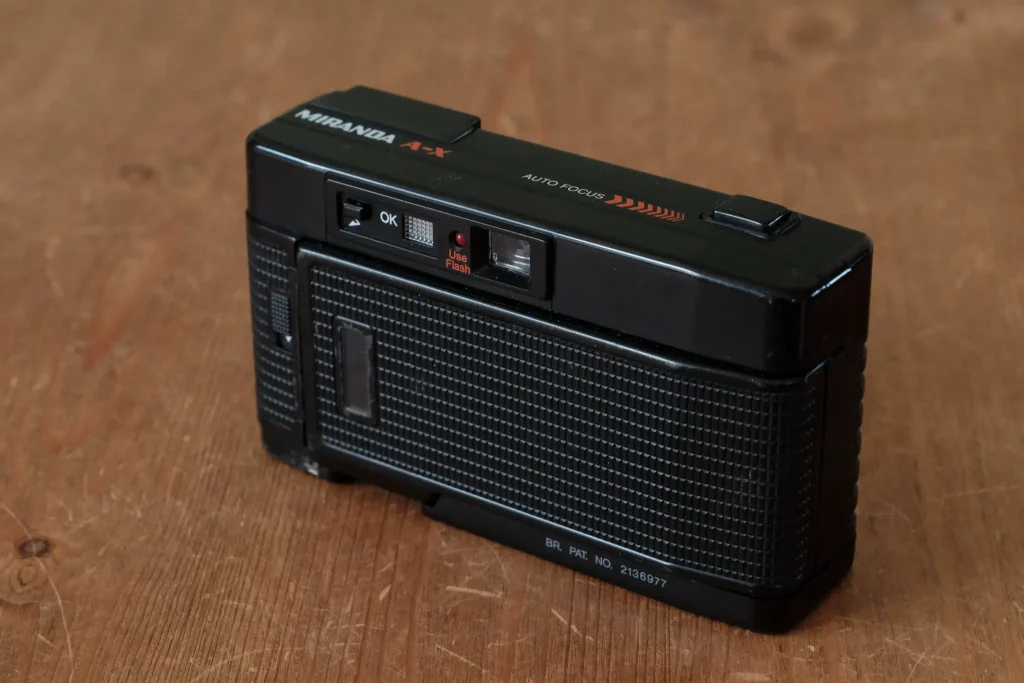
Build Quality
In terms of build quality, I actually think it’s okay. It appears completely identical to Hamish’s AF810 except that where that has a red front panel and lens cover, the A-X’s are black with red highlights in that oh-so 80s A-Team style. The lens cover doesn’t have the flushest of fits, but it slides back and forth in a pleasingly chunky way.
The same can’t be said of the battery door, the catch of which snapped off in about 1988 and has been held shut with tape ever since. The film door also feels a little flimsy, but the auto wind-on has worked without issue and doesn’t seem as sensitive as to leader length as other compacts from this era.
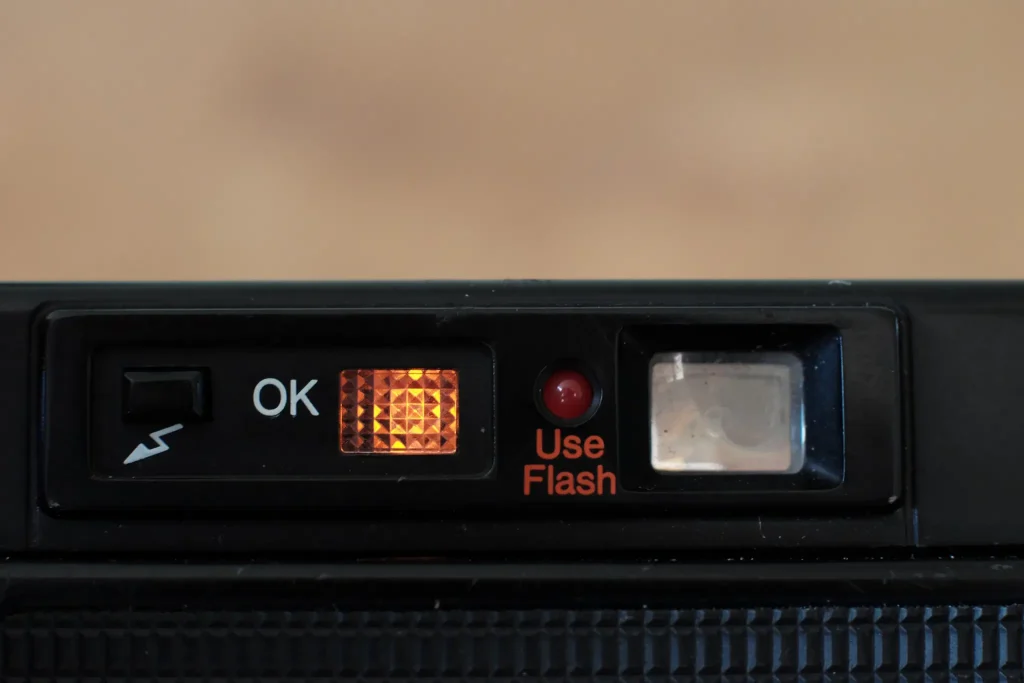
Handling
Handling isn’t the Miranda A-X’s strong point, either. It’s a little smaller and lighter than a Ricoh FF90, but it’s essentially brick-shaped. The ridged area on the lens cover provides a natural place for fingers to rest, but the hand grip on the right side is perilously close to the lens and a bit too small. As a result, it’s very easy to end up with a fingertip in shot. The viewfinder is a reasonable size and quite bright, with parallax correction lines clearly visible.
Unlike a lot of 80s compacts, there are no automatic flash modes at all. A light immediately adjacent to the viewfinder indicates whether flash is needed, but it’s up to the photographer to actually press the button to make it pop up. If you hate being surprised by a flash you didn’t want, you’d probably get on well with the A-X. A second light on the back panel illuminates when the flash is fully charged, which takes several seconds.


Image quality
In terms of image quality, I wasn’t expecting a great deal. I remember our family photos back in the 80s and 90s being pretty fuzzy. However, I now wonder whether that was down to the quality of the film labs we used rather than the Miranda itself, because it’s actually not half bad.

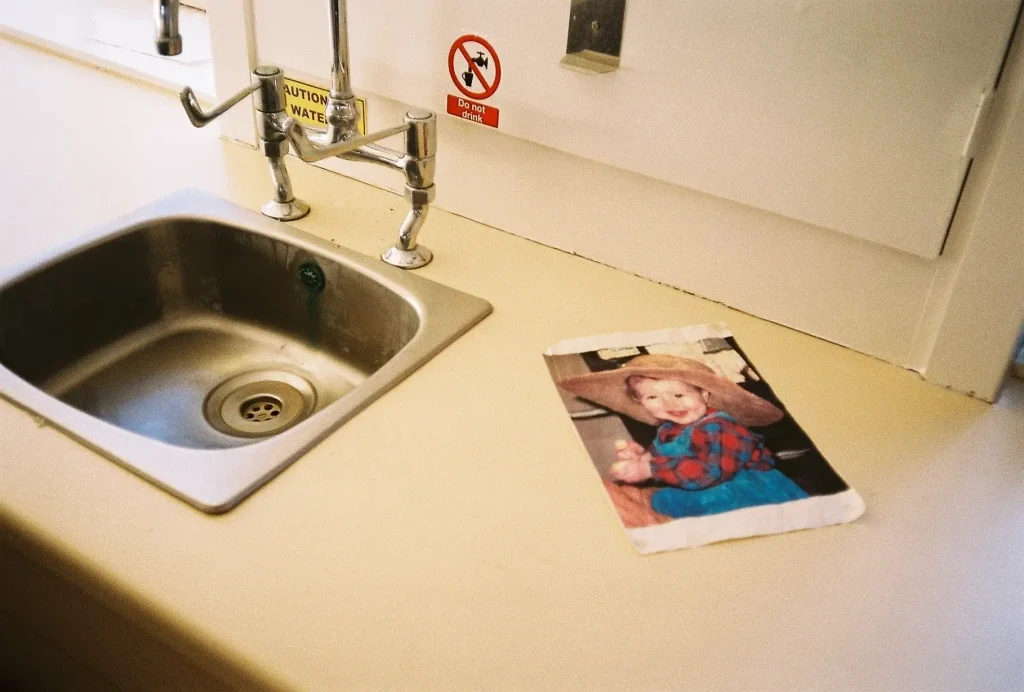
The Miranda A-X lens is quite sharp in the centre and doesn’t fall off very much in the corners. Contrast is reasonable and there’s some quite pronounced vignetting when wide open. Autofocus is sometimes assisted by a red light from the window to the left of the viewfinder, and the system is reliable in use. Minimum focusing distance seems quite long, however. I’d estimate it’s 100-120cm, and I’ve been caught out a few times.

The metering system is robust and the Miranda A-X tends to cope quite well when scenes have a lot of dynamic range. One quirk I did note was that in darkish scenes with poor light the A-X tends to underexpose just a touch, but this can actually complement the lens, lending shots a slightly grubby, gritty feel.
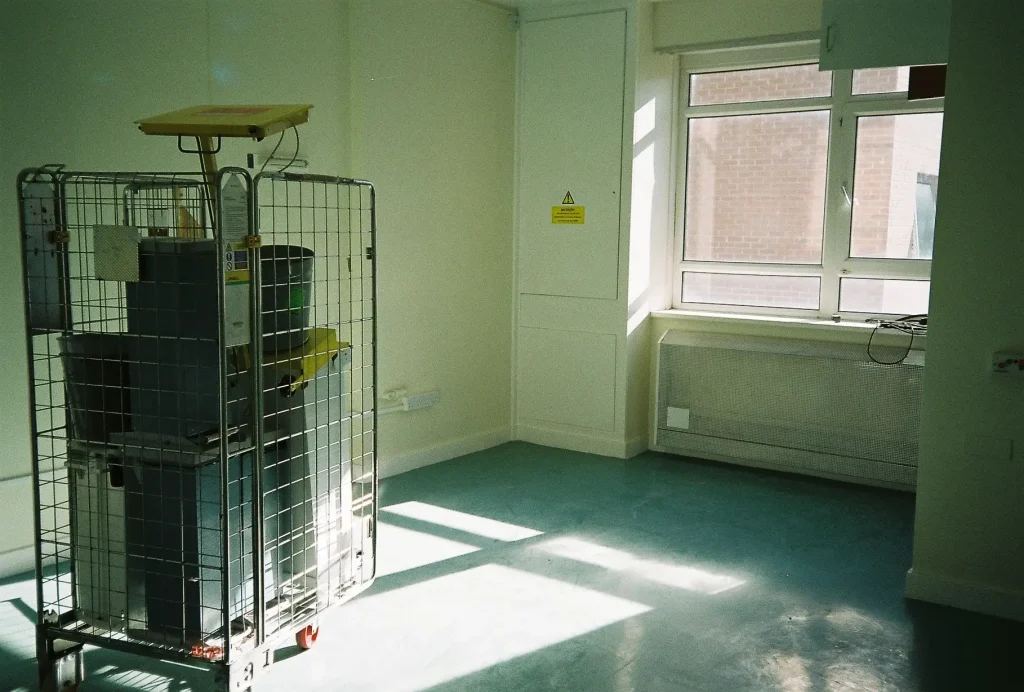
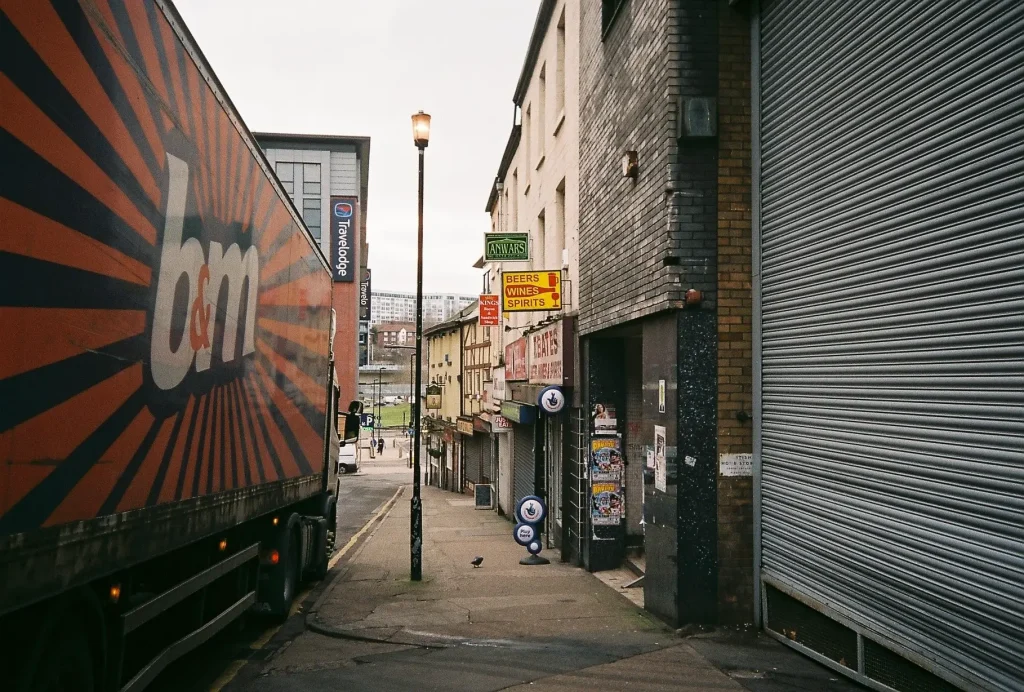

No slow speeds
One thing I hadn’t picked up on until Hamish’s review was the lack of slow shutter speeds on the Miranda A-X, but it turns out I’d unwittingly tested this feature on my wedding day. As part of a film photography theme, we put a couple of auto compacts and cheap film on every table (great idea, by the way, but don’t use Polaroid whatever you do – people have no idea what it costs these days!) It seemed fitting to have my grandfather’s camera on the top table, so I actually have a roll of film shot, inexpertly, by my family, who didn’t think to use the flash half the time.
Looking back at the shots, it’s striking that none of them showed any camera shake at all. Below a certain level of light, the A-X must just select its longest speed, throw the aperture wide open and hope for the best. The results are quite badly underexposed, but clear.
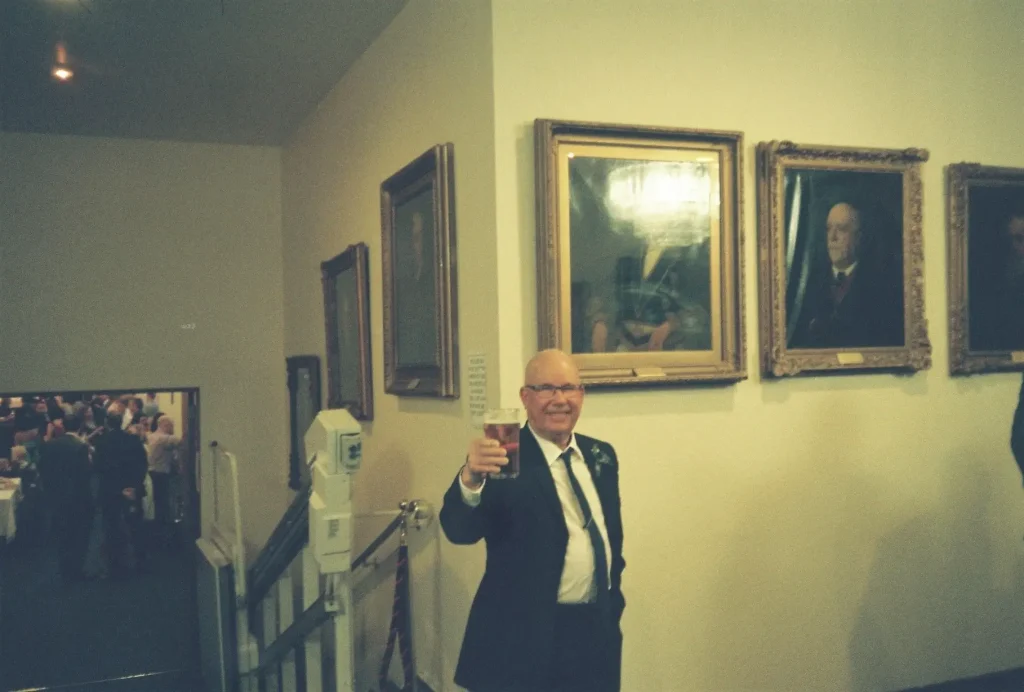
The shots with flash actually come out pretty sharp, but the flash is a bit too bright so highlights are often blown. Colour rendition is also a bit strange with the flash. Some colours pop quite nicely, but others look odd, especially skin tones. This may be down to the film – I’ve read that Fuji Superia can give a green cast in certain conditions – as the colours are reasonable in daylight.
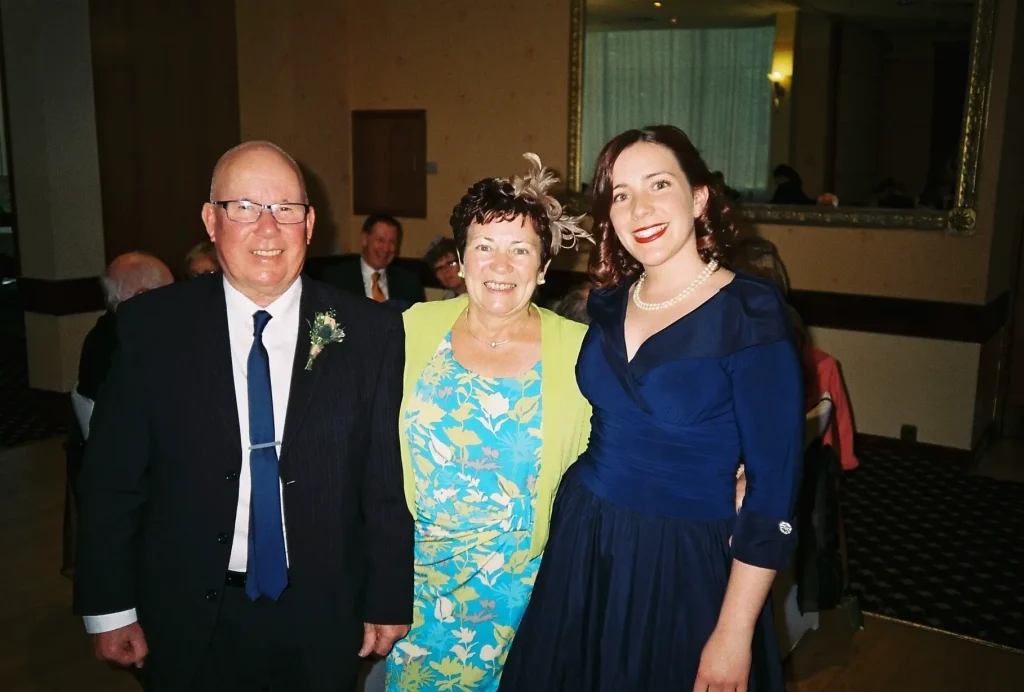
A healthier clone?
All things considered, I’d say it does seem like my camera is quite a bit better than Hamish’s Halina. I suppose the question is, is this camera a superior model or just a healthier clone? I don’t suppose we’ll ever know for sure, but I suspect the latter is nearer the truth. T
he Miranda A-X appears to be completely identical in physical form and function to the Halina. The only question mark for me is that lens. On the one hand, the keepers from the Miranda appear to be sharper and clearer but on the other, I’ve had several promising shots disappoint because, for whatever reason, the A-X just didn’t shine. Would Halina really have made different 34mm lenses at f/3.8, f/4 and f/4.5 (for the AF700 reviewed by Miriam Woodbourn)? On paper, I’d expect them to be the same lens, crippled with smaller max apertures in cheaper cameras, but the results don’t seem to bear that out. Maybe what we’re dealing with here is a combination of decent camera design, variable build quality and shoddy quality control. All I know is, if you happen to see a Miranda A-X at a car boot sale for a few quid then it’s probably worth a punt. You might get the fun 80s point & shoot the AF810 didn’t turn out to be.
Share this post:
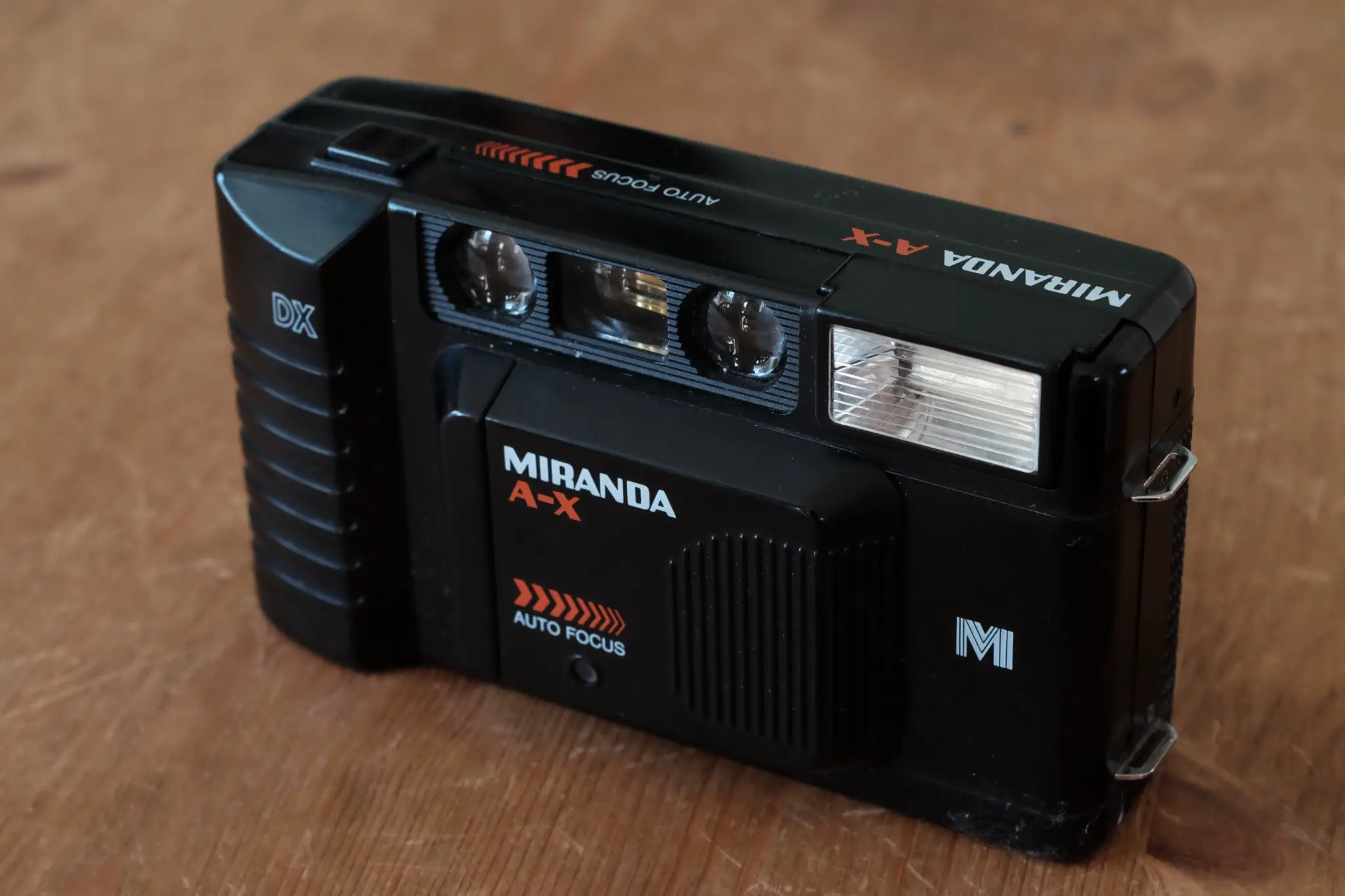








Comments
Hamish Gill on Miranda A-X – Attack of the Clone – Guest Review by Ken Hindle-May
Comment posted: 09/07/2016
It's also interesting that your flash automatically pops up, whereas the 810 flash didn't
Your photos do look sharper than mine too, all be it only slightly ...
Interesting!
Thanks Ken!!
Comment posted: 09/07/2016
Comment posted: 09/07/2016
Comment posted: 09/07/2016
Charles Higham on Miranda A-X – Attack of the Clone – Guest Review by Ken Hindle-May
Comment posted: 11/07/2016